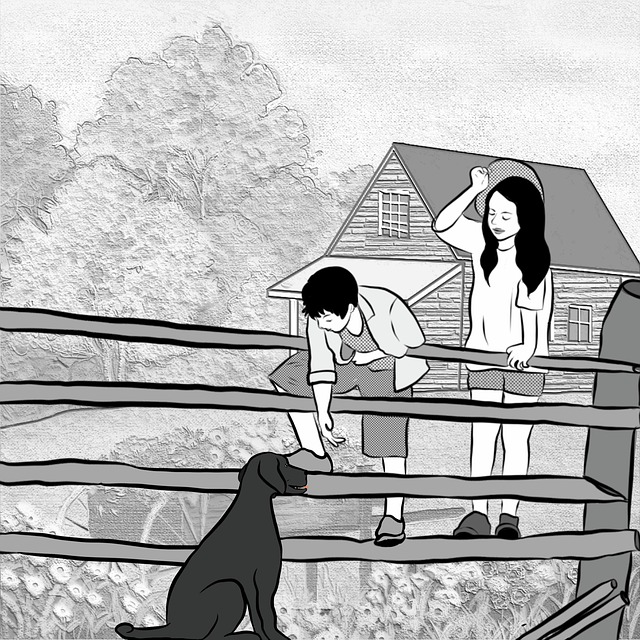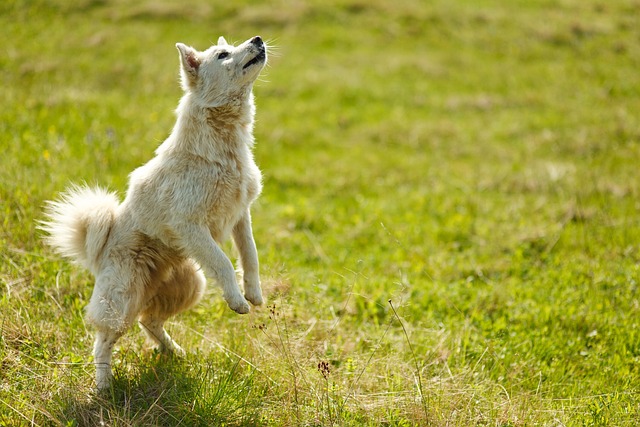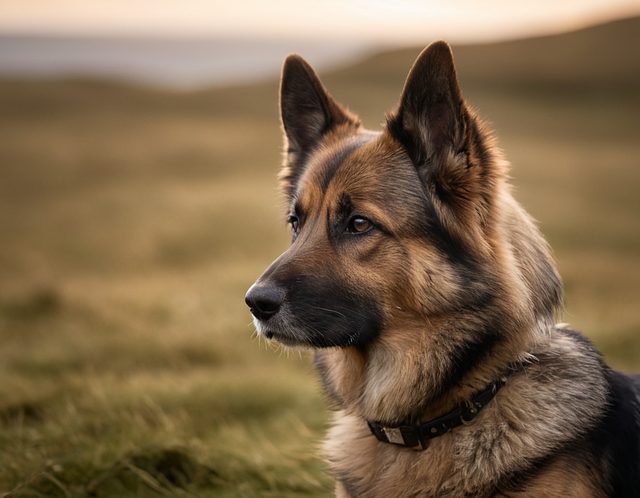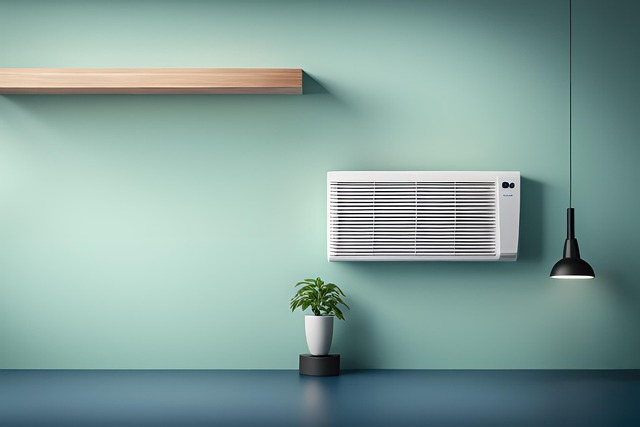Weatherproofing a dog house is crucial for year-round comfort and safety. An air-conditioned dog house combines modern cooling systems with durable materials like high-density polypropylene to maintain ideal temperatures in diverse climates. Key features include proper ventilation, insulation, secure locking systems, and regular maintenance to protect against elements and pests. Case studies demonstrate the benefits of these structures for pets' well-being, showcasing their effectiveness in various environments.
“In any climate, ensuring your pet dog has a safe, comfortable sanctuary is paramount. This comprehensive guide delves into the essential aspects of creating durable and weatherproof dog houses, catering specifically to those seeking solutions for their air-conditioned dog homes.
From understanding the core weatherproofing principles to exploring material choices, ventilation design, insulation techniques, and crucial security features, we provide an in-depth look at maintaining a dog house that stands the test of time and protects your pet from the elements. Explore real-world case studies, gain expert insights, and discover how to keep your dog’s sanctuary secure and durable.”
Understanding Weatherproofing Essentials for Dog Houses

Weatherproofing is an essential aspect of ensuring your furry friend has a comfortable and safe sanctuary, especially in regions with varying climates. When it comes to dog houses, understanding the weatherproofing essentials is crucial to provide a durable shelter for your canine companion. A well-insulated and protected dog house can offer relief from extreme temperatures, be it sweltering summer days or chilly winter nights.
For outdoor dogs, an air-conditioned dog house can be a game-changer. This isn’t just about keeping them cool; it’s also about preventing heatstroke and ensuring they have a quiet, comfortable space to retreat to. Similarly, in colder climates, proper weatherproofing involves using materials that lock in warmth while repelling moisture. This includes sealing gaps, adding insulation, and selecting water-resistant or waterproof fabrics to shield the dog house from wind, rain, and snow.
The Role of Durability in Outdoor Dog Shelter Design

In designing an outdoor dog shelter, durability and weatherproofness are paramount. These qualities ensure that the dog house provides consistent comfort and protection for its four-legged inhabitants, regardless of the season or weather conditions. A well-built, durable structure can withstand extreme temperatures, heavy rainfall, strong winds, and even snow, making it a reliable sanctuary for dogs.
The concept of an air-conditioned dog house highlights this need for durability. While traditional dog houses rely on natural ventilation, modern designs may incorporate advanced cooling systems to maintain optimal indoor temperatures. However, these features must be integrated seamlessly into a sturdy framework that can resist the elements. Thus, durability is not just about protecting against wear and tear; it’s about ensuring the structural integrity of the shelter, allowing for enhanced comfort features while maintaining outdoor exposure for the dog’s overall well-being.
Material Considerations for Air-Conditioned Dog Houses

When considering materials for an air-conditioned dog house, it’s crucial to balance durability and weatherproofing with comfort and energy efficiency. Opt for robust yet lightweight options like high-density polypropylene or recycled plastic. These materials are not only resistant to rot and rust but also insulate well, helping to maintain a consistent temperature inside the house. They are easy to clean and maintain, ensuring your pet’s living space stays hygienic.
Avoid using traditional wood if possible, as it can attract pests, rot over time, and requires frequent treatment with chemicals or paint to prevent weather damage. Instead, look for materials that offer long-term protection against UV rays, extreme temperatures, and moisture. Proper ventilation is also key; incorporate mesh panels or breathable fabrics to allow air circulation and prevent the buildup of humidity inside the dog house.
Engineering Ventilation for Weatherproof Dog Shelters

Creating a weatherproof dog shelter that’s also comfortable involves clever engineering, especially when considering ventilation. In harsh weather conditions, proper airflow is essential to prevent overheating and maintain humidity levels, ensuring your furry friend stays safe and sound. An innovative approach is to integrate subtle yet effective ventilation systems into the design of an air conditioned dog house.
This can be achieved through strategically placed openings and mesh panels, allowing for a natural exchange of fresh air while keeping out rain and snow. Additionally, installing exhaust fans or utilizing passive cooling methods like ridge vents can significantly enhance the shelter’s climate control capabilities, making it feel more like a cozy home than a weatherproof box.
Insulation and Its Impact on Dog House Comfort

Insulation plays a pivotal role in creating a comfortable and cozy sanctuary for your furry friend, especially in an air-conditioned dog house. It acts as a barrier against extreme temperatures, ensuring the interior remains cool during hot summer days and warm during chilly winter nights. By trapping heat or cooling air, insulation significantly enhances the overall comfort level, making it akin to having a personal climate-controlled space for your dog.
An air-conditioned dog house that is well-insulated can maintain a consistent temperature, providing a sanctuary free from harsh weather conditions. This is particularly beneficial for dogs that suffer from heatstroke or hypothermia, as insulation offers protection against sudden temperature changes. Additionally, it reduces noise pollution from external elements, creating a quieter and more peaceful environment for your dog to relax and rest.
Security Features to Protect Dogs from Unpredictable Weather

In today’s digital era, folks are more attuned than ever to enhancing their pets’ quality of life. When it comes to outdoor comfort, an air-conditioned dog house stands out as a game-changer. This isn’t just about luxury; it’s about safety too. Unpredictable weather can bring extreme temperatures, from scorching heatwaves to icy blizzards. A well-designed, weatherproof dog house with built-in cooling or heating mechanisms offers a refuge, protecting dogs from the elements.
Security features play a crucial role in this scenario. The best air-conditioned dog houses often incorporate robust materials and designs that safeguard against wind, rain, and even hail. Additionally, some models include secure locking systems to keep curious critters or stray animals out, ensuring your pup can rest undisturbed. These safety measures are especially vital during severe weather conditions, providing a stable and comfortable sanctuary for dogs to retreat to.
Maintenance Tips for Longevity: Keeping Your Dog's Sanctuary Safe

Proper maintenance is key to ensuring your dog’s sanctuary, especially an air-conditioned dog house, remains durable and weatherproof for years. Regular cleaning with mild soap and water helps prevent the buildup of dirt and odors that can attract pests. Check the structure for any signs of wear or damage, particularly after harsh weather events, and make repairs promptly to avoid weak spots that could compromise its integrity.
Store the dog house indoors when not in use to protect it from direct sunlight, extreme temperatures, and potential contaminants. Consider using a protective cover tailored for air-conditioned dog houses to shield it from debris and extreme weather conditions. Regular inspections and timely maintenance will contribute significantly to the longevity of your pet’s comfortable and secure outdoor haven.
Real-World Applications: Case Studies of Durable, Weatherproof Dog Houses

In real-world applications, durable and weatherproof dog houses have become essential for pet owners who want to ensure their canine companions enjoy comfort and safety year-round. Case studies highlight the importance of such structures, especially in regions with varying climates. For instance, an air conditioned dog house has been a game-changer for families living in hot summers and cold winters. This innovative design incorporates insulation and cooling systems, providing a comfortable indoor environment despite external weather conditions.
One successful case study involves a family in a humid subtropical climate who installed an air conditioned dog house for their large breed dogs. The structure was designed with durable materials, including waterproof siding and a strong frame to withstand frequent storms and high winds. The result was a safe haven for the dogs, offering them relief from extreme heat and cold, and ensuring their well-being throughout the changing seasons.
